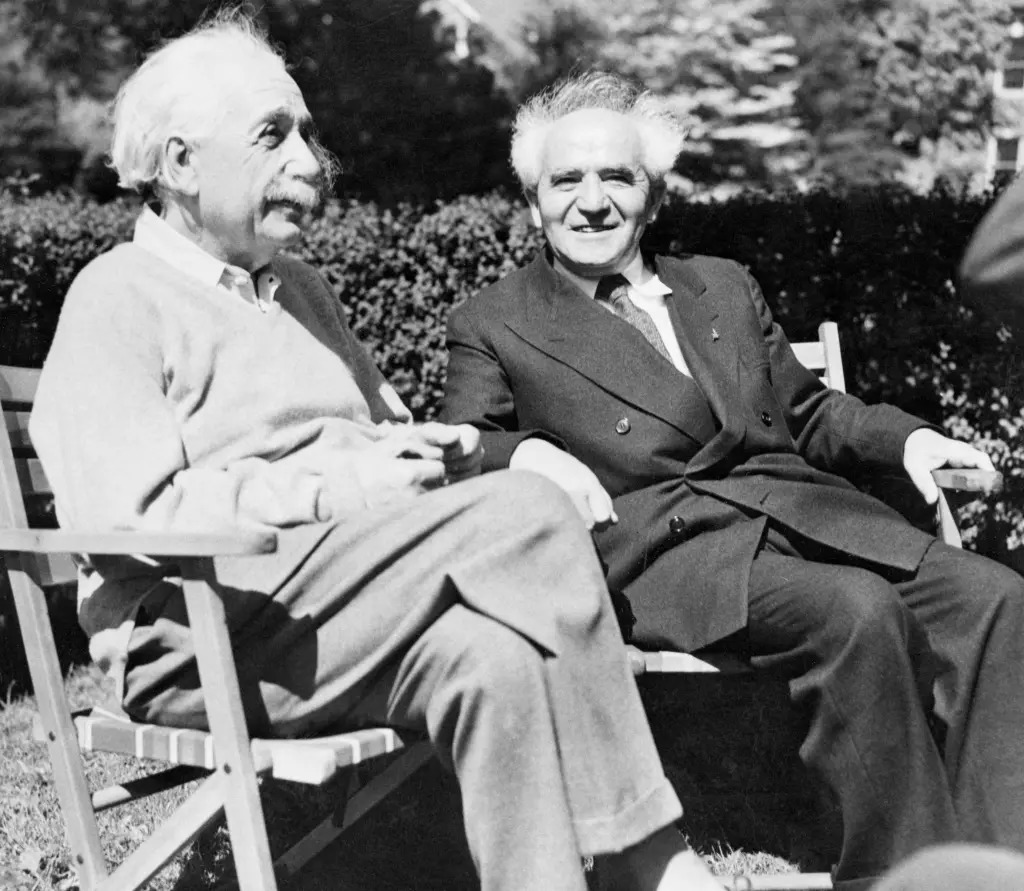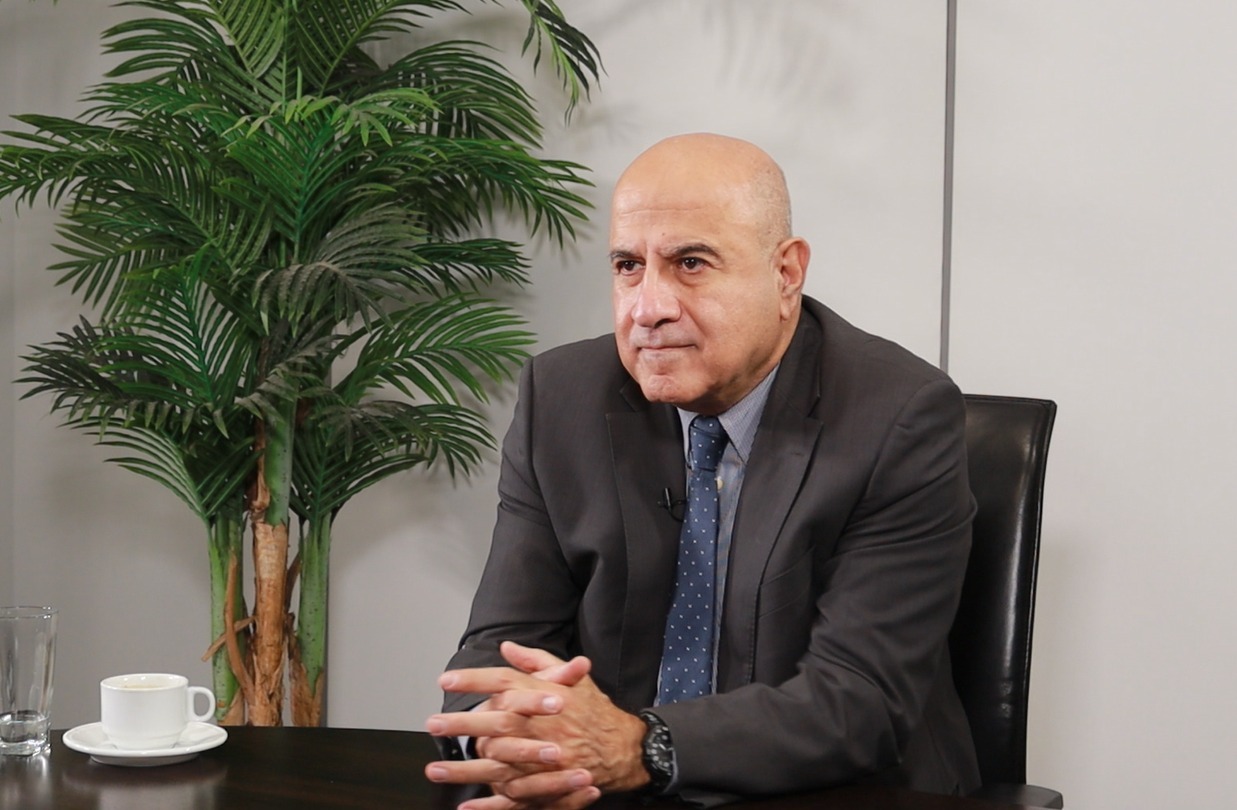لماذا يُعّد “الترانسفير” من غزة أكبر المحرمات في حرب حماس؟
د. مردخاي نيسان/نيويورك بوست/ 12 شبتط/2024
Why ‘transfer’ from Gaza is the Hamas war’s biggest taboo
Dr. Mordechai Nisan/New York Post/February 12/2024
The massacre by Hamas of 1,200 Israelis last October 7 triggered the Israeli army’s invasion of the Gaza Strip to eradicate Hamas, demolish its military infrastructure and liberate 240 hostages from captivity.
Nearly 28,000 Palestinians have died in the months since, according to the Hamas-run health administration. And Israel’s military operations have displaced hundreds of thousands more.
The result: The Hamas assailants are increasingly portrayed as victims in a manipulative twisting of the truth.
In its 1988 Covenant, Hamas made its goals clear: “To raise the banner of Allah over every inch of Palestine.”
If not destroyed, the war of Hamas against Israel will continue without end.
One solution to Hamas’ intractable violence has been the transfer of Gazans from Gaza.
In November, Israel’s Right-wing Finance Minister Bezalel Smotrich called for upwards of 1.8 million Gazans to “voluntarily” leave the Gaza Strip, while last month Israeli Prime Minister Benjamin Netanhyu was reportedly in talks to resettle Gazans to locations as far flung as Congo.
The idea of Arab population transfer is nothing new. Indeed, resettlement touches upon Zionism’s century-long predicament with its Arab neighbors.
Stalwart Zionists – Theodore Herzl, Chaim Weizmann, David Ben-Gurion – favored encouraging Arab migration to nearby countries during the period around Israel’s independence.
Approximately 500,000 Arabs fled Israel amid the turmoil of 1948; another 250,000 left the West Bank for Jordan in the decades that followed.
Confounded by a large hostile Arab population within the territorial additions that followed 1967’s Six-Day War, Israeli political leaders, Levi Eshkol and Moshe Dayan, promoted Arab emigration to nearby Jordan and even distant Latin America.
Although no plan was ever enacted, today, some half a million people of Palestinian origin make their home in Chile.
In recent years, Israel’s security establishment began to revisit Gazan resettlement following a series of brief, yet bloody, battles with Hamas.
According to the noted Israeli television commentator Ohad Hemo, who specializes in Arab Affairs: “The dream of every youth in Gaza is to emigrate [to the West].”
An estimated 250,000 – 350,000 young Palestinian men already have since Hamas overthrew the ruling Palestinian Authority in 2007.
Some departed permanently, while others left for temporary work in European countries.
The possibility of Palestinian emigration on a significant scale has its historical roots in similar cases during times of great conflict across the globe.
Wars catalyzed flight for Bosnians to Austria in the 1990s, and Armenians from Nagorno-Karabakh nearly three decades later.
Millions of Afghans, Syrians, and Ukrainians, became refugees amid trauma and upheaval of wars and invasion in their own lands.
The case of Gaza is similar – yet different.
The embattled UN agency UNRWA, for instance, has helped ensure that generations of Gazans would remain refugees in their own land, regardless of the changing world around them.
Gazan refugee camps, housing some 155 UNRWA facilities, became a breeding ground of hatred of Israel and, as recently revealed by Israeli forces, a storehouse for arms caches.
The camps were also a convenient political tool, a symbol of Arab efforts to exercise their “right of return” to abandoned homes lost in 1948.
Weaned on a diet of Islamic fanaticism and rabid Jew-hatred, Hamas-run Gaza is not the kind of neighbor Israel should – or even could – tolerate in the long term.
Despite those hundreds of thousands who’ve already left, the international community is intent on denying Gazans the choice of emigration – even if it might extricate them from a life of despair and hardship.
Canada has expressed a willingness to accept some Gazan refugees, while the Muslim republic of Chechnya within the Russian Federation accepted roughly 1,200 Gazan refugees early this year.
Nations in Africa and South America, said Israeli Parliament Member Danny Danon in December, are also willing to open their doors, though some have requested financial compensation.
And potential relocation plans to Egypt have been also discussed.
If only the West would let them.
Last month, Secretary of State Antony Blinken exemplified this illogical moral posturing when he said during a visit to Jerusalem that the United States “rejects the settlement of Palestinians outside of Gaza.” Similar sentiments were shared by leading EU and UK politicians, while Europe’s borders are being tightened to prevent a surge of Gazan migrants to nations already overflowing with refugees.
The idea of Palestinian emigration remains the great ‘elephant in the room’ as war rages in Gaza. But few dare discuss it honestly.
As he allows millions of illegal immigrants to cross into the US, President Biden opposes a similar ‘world without borders’ for Palestinians that might offer them a new life, as well.
Perhaps the greatest irony lies in the population transfer that has already taken place in Gaza – of 8,000 Israeli Jews forcefully expelled by their own government during its departure from the Gaza Strip in 2005.
This was a move the US supported, viewed as a step toward regional reconciliation and peace.
Nearly two decades later, a transfer in reverse is seen by Washington as a violation of human rights.
The contrast combines a moral sham with political recklessness — perpetuating a seemingly intractable conflict instead of pushing to resolve it.
*Dr. Mordechai Nisan, a retired lecturer at the Hebrew University of Jerusalem and author of numerous books on Middle East history.
https://nypost.com/2024/02/10/opinion/transfer-from-gaza-is-the-hamas-wars-biggest-taboo/
لماذا يُعّد “الترانسفير” من غزة أكبر المحرمات في حرب حماس؟
د. مردخاي نيسان/نيويورك بوست/ 12 شبتط/2024
ترجمة موقع غوغل من الإنكليزية للعربية
كانت المذبحة التي ارتكبتها حماس وراح ضحيتها 1200 إسرائيلي في السابع من أكتوبر/تشرين الأول الماضي سبباً في قيام الجيش الإسرائيلي بغزو قطاع غزة للقضاء على حماس، وتدمير بنيتها التحتية العسكرية، وتحرير 240 رهينة من الأسر.
وتوفي ما يقرب من 28 ألف فلسطيني في الأشهر التي تلت ذلك، وفقًا لإدارة الصحة التي تديرها حماس. وأدت العمليات العسكرية الإسرائيلية إلى نزوح مئات الآلاف غيرهم.
والنتيجة: تصوير مهاجمي حماس على نحو متزايد على أنهم ضحايا في عملية تحريف للحقيقة.
وفي ميثاقها لعام 1988، أوضحت حماس أهدافها: “رفع راية الله على كل شبر من فلسطين”.
وإذا لم يتم تدميرها، فإن حرب حماس ضد إسرائيل سوف تستمر بلا نهاية.
أحد الحلول لعنف حماس المستعصي هو نقل سكان غزة من غزة.
وفي نوفمبر/تشرين الثاني، دعا وزير المالية الإسرائيلي اليميني بتسلئيل سموتريتش ما يصل إلى 1.8 مليون من سكان غزة إلى مغادرة قطاع غزة “طوعاً”، بينما أفادت تقارير أن رئيس الوزراء الإسرائيلي بنيامين نتنياهو يجري الشهر الماضي محادثات لإعادة توطين سكان غزة في مواقع بعيدة مثل الكونغو.
إن فكرة نقل السكان العرب ليست جديدة. والواقع أن إعادة التوطين تمس المأزق الذي تعيشه الصهيونية منذ قرن من الزمان مع جيرانها العرب.
وكان الصهاينة الشجعان – ثيودور هرتزل، وحاييم وايزمان، وديفيد بن غوريون – يفضلون تشجيع الهجرة العربية إلى البلدان المجاورة خلال الفترة المحيطة باستقلال إسرائيل.
وفر ما يقرب من 500.000 عربي من إسرائيل وسط اضطرابات عام 1948؛ وغادر 250 ألف آخرين الضفة الغربية إلى الأردن في العقود التالية.
وفي ظل الحيرة من العدد الكبير من السكان العرب المعادين داخل الإضافات الإقليمية التي أعقبت حرب الأيام الستة في عام 1967، شجع القادة السياسيون الإسرائيليون، ليفي أشكول وموشيه ديان، الهجرة العربية إلى الأردن المجاورة وحتى أمريكا اللاتينية البعيدة.
وعلى الرغم من عدم وضع أي خطة على الإطلاق، إلا أن حوالي نصف مليون شخص من أصل فلسطيني يقيمون اليوم في تشيلي.
في السنوات الأخيرة، بدأت المؤسسة الأمنية الإسرائيلية في إعادة النظر في إعادة التوطين في غزة في أعقاب سلسلة من المعارك القصيرة، ولكن الدموية، مع حماس.
ووفقاً لمعلق التلفزيون الإسرائيلي الشهير أوهاد حمو، المتخصص في الشؤون العربية: “إن حلم كل شاب في غزة هو الهجرة [إلى الغرب]”.
هناك ما يقدر بنحو 250.000 إلى 350.000 شاب فلسطيني منذ أن أطاحت حماس بالسلطة الفلسطينية الحاكمة في عام 2007.
البعض غادر بشكل دائم، والبعض الآخر غادر للعمل المؤقت في الدول الأوروبية.
إن احتمال هجرة الفلسطينيين على نطاق واسع له جذوره التاريخية في حالات مماثلة خلال أوقات الصراع الكبير في جميع أنحاء العالم.
وحفزت الحروب فرار البوسنيين إلى النمسا في التسعينيات، والأرمن من ناجورنو كاراباخ بعد ما يقرب من ثلاثة عقود.
أصبح الملايين من الأفغان والسوريين والأوكرانيين لاجئين وسط الصدمة والاضطرابات الناجمة عن الحروب والغزو في أراضيهم.
والحالة في غزة مماثلة ولكنها مختلفة.
على سبيل المثال، ساعدت وكالة الأمم المتحدة المحاصرة، الأونروا، في ضمان بقاء أجيال من سكان غزة لاجئين في أراضيهم، بغض النظر عن العالم المتغير من حولهم.
وأصبحت مخيمات اللاجئين في غزة، التي تضم حوالي 155 منشأة تابعة للأونروا، أرضًا خصبة للكراهية تجاه إسرائيل، وكما كشفت القوات الإسرائيلية مؤخرًا، أصبحت مخزنًا لمخابئ الأسلحة.
وكانت المعسكرات أيضًا أداة سياسية مناسبة، ورمزًا للجهود العربية لممارسة “حق العودة” إلى المنازل المهجورة التي فقدوها في عام 1948.
إن غزة التي تديرها حماس، بعد فطامها على نظام غذائي قائم على التعصب الإسلامي والكراهية المسعورة لليهود، ليست ذلك النوع من الجارة الذي ينبغي لإسرائيل ـ أو حتى تستطيع ـ أن تتسامح معه في الأمد البعيد.
وعلى الرغم من مئات الآلاف الذين غادروا بالفعل، فإن المجتمع الدولي عازم على حرمان سكان غزة من خيار الهجرة – حتى لو كان ذلك قد ينقذهم من حياة اليأس والمشقة.
وقد أعربت كندا عن استعدادها لقبول بعض اللاجئين من غزة، في حين قبلت جمهورية الشيشان الإسلامية داخل الاتحاد الروسي ما يقرب من 1200 لاجئ من غزة في أوائل هذا العام.
وقال عضو البرلمان الإسرائيلي داني دانون في ديسمبر/كانون الأول، إن الدول في إفريقيا وأمريكا الجنوبية مستعدة أيضًا لفتح أبوابها، على الرغم من أن البعض طلب تعويضات مالية.
كما تمت مناقشة خطط النقل المحتملة إلى مصر.
لو أن الغرب سمح لهم بذلك.
في الشهر الماضي، جسد وزير الخارجية أنتوني بلينكن هذا الموقف الأخلاقي غير المنطقي عندما قال خلال زيارة إلى القدس إن الولايات المتحدة “ترفض توطين الفلسطينيين خارج غزة”. وقد أعرب كبار الساسة في الاتحاد الأوروبي والمملكة المتحدة عن مشاعر مماثلة، في حين يتم تشديد حدود أوروبا لمنع تدفق المهاجرين من غزة إلى دول تكتظ بالفعل باللاجئين.
تظل فكرة الهجرة الفلسطينية بمثابة “الفيل الكبير في الغرفة” مع احتدام الحرب في غزة. لكن قليلين هم من يجرؤون على مناقشة الأمر بأمانة.
وبينما يسمح لملايين المهاجرين غير الشرعيين بالعبور إلى الولايات المتحدة، يعارض الرئيس بايدن وجود “عالم بلا حدود” مماثل للفلسطينيين قد يوفر لهم حياة جديدة أيضًا.
ولعل المفارقة الأعظم تكمن في نقل السكان الذي حدث بالفعل في غزة ـ حيث طردت حكومتهم 8000 يهودي إسرائيلي بالقوة أثناء رحيلها من قطاع غزة في عام 2005.
وكانت هذه خطوة دعمتها الولايات المتحدة، واعتبرت خطوة نحو المصالحة والسلام الإقليميين.
وبعد ما يقرب من عقدين من الزمن، تنظر واشنطن إلى النقل العكسي على أنه انتهاك لحقوق الإنسان.
ويجمع هذا التناقض بين الخداع الأخلاقي والتهور السياسي ــ مما يؤدي إلى إدامة صراع يبدو مستعصيا على الحل بدلا من الدفع نحو حله.
*دكتور. مردخاي نيسان، محاضر متقاعد في الجامعة العبرية في القدس ومؤلف العديد من الكتب حول تاريخ الشرق الأوسط.
https://nypost.com/2024/02/10/opinion/transfer-from-gaza-is-the-hamas-wars-biggest-taboo/




















